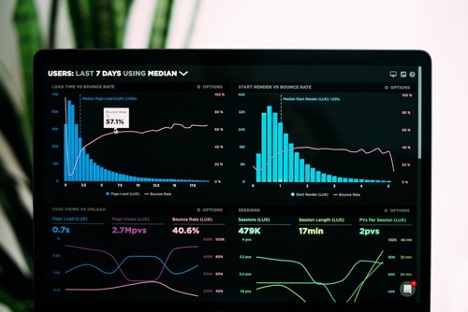Table of Contents
Introduction
Plenty of tools make it easy for you to discover existing APIs and create new APIs that integrate essential parts of your IT infrastructure. However, using an API to connect two or more assets doesn’t ensure that you get excellent performance. You need API monitoring to review critical metrics, including:
- API package consumption
- Lifecycle state monitoring
- Latency
- Throughput
- Security
- Developer portal performance
- Technical gateway performance
API monitoring
Ideally, your API monitoring should tell you everything from who uses the API to how long it takes the API to process requests. Any performance issues can create security problems for your business and slow your productivity. After all, the more time your team members spend waiting for a task to finish, the less work they accomplish during their shifts. Many tools promise to help with API monitoring. In truth, some of them work pretty well, especially when they come packaged with larger solutions that can create, convert, and manage APIs.
However, few tools give you the in-depth data that you need to monitor every aspect of your API so you can evaluate and improve performance while ensuring security. For that level of insight, you need a solution like hosted Graphite with MetricFire.
What Are the Use Cases of API Monitoring?
Learning about common use cases for API monitoring helps in understanding the importance of choosing a reliable, data-rich tool that gives you control over your information and functionality. At the most basic level, an API connects digital assets without forcing a developer to integrate them. An API allows two applications to share information with each other, connects new software to legacy systems, and gives third-party vendors access to your company’s tools.
APIs can do a lot. Looking at specific use cases of API monitoring shows why every business can benefit from adopting a tool that provides data-rich oversight, optimization, and monitoring.
Recommended reading: Webhooks vs. API
Monitoring API for Data as a Service (DaaS)
Data as a Service (DaaS) has become an increasingly critical component of business success. As more companies rely on data to understand their customers and optimize their processes, it makes sense for them to store this information for current and future applications.
However, your Data as a Service solution doesn’t always connect directly to your system. You may need a tool that funnels data from the cloud to your on-site network. You could use an ETL (extract, transform, load) product, but these are costly and only provide limited services.
Using an API to move data often generates a greater return on your investment because it’s inexpensive and secure. In addition, tools like MetricFire monitor API performance and ensure that data gets properly labeled and stored.
Once you have the data you need, you can mine it for insights that will give your company more opportunities for success.
Book a MetricFire Demo to start a free trial that will improve your API monitoring power.
What Are the Use Cases of API Monitoring?
Learning about common use cases for API monitoring helps in understanding the importance of choosing a reliable, data-rich tool that gives you control over your information and functionality.
At the most basic level, an API connects digital assets without forcing a developer to integrate them. An API allows two applications to share information with each other, connects new software to legacy systems, and gives third-party vendors access to your company’s tools.
APIs can do a lot. Looking at specific use cases of API monitoring shows why every business can benefit from adopting a tool that provides data-rich oversight, optimization, and monitoring.
Recommended reading: Webhooks vs. API
Monitoring API for Data as a Service (DaaS)
Data as a Service (DaaS) has become an increasingly critical component of business success. As more companies rely on data to understand their customers and optimize their processes, it makes sense for them to store this information for current and future applications.
However, your Data as a Service solution doesn’t always connect directly to your system. You may need a tool that funnels data from the cloud to your on-site network. You could use an ETL (extract, transform, load) product, but these are costly and only provide limited services.
Using an API to move data often generates a greater return on your investment because it’s inexpensive and secure. In addition, tools like MetricFire monitor API performance and ensure that data gets properly labeled and stored. Once you have the data you need, you can mine it for insights that will give your company more opportunities for success.
API Integration Use Case
Sometimes you cannot get the results you want from connecting two applications via one API. Instead, you need two APIs designed to communicate with each other. The processes flowing from application one are sent to API one, which adapts the information before passing it to API two. API two then sends commands and data that application two can understand.
When you have multiple layers of API integration, you need to pay even closer attention to performance. MetricFire with hosted Graphite can collect and label all of the metrics that you need to ensure fast processing and continuous cooperation between assets.
B2B Integration API Monitoring Use Case
Assuming that your business works with suppliers, vendors, and other third-party organizations, you probably need to give them some access to your digital tools. This requires careful consideration because you want them to access the data and processes that they need to do their jobs without letting them browse through sensitive assets.
API monitoring helps ensure that third-party organizations use your digital assets as agreed instead of taking advantage of permissions they shouldn’t have.
Looking for a more robust, reliable way to monitor your APIs? Schedule a MetricFire demo and start a free trial.
How MetricFire Can Help!
MetricFire gives you hosted Graphite that enhances the features of open-source Graphite. This ensures you get an in-depth look at your data while maintaining complete control over your APIs. With MetricFire’s hosted Graphite, you get:
- Seamless scaling with three redundant copies of data to ensure you always have access to your information.
- APIs built for automation and control.
- Tagged metrics that make it easier for you to view and organize data.
- Support from MetricFire’s engineers and developers whenever you need it.
- Plug-and-play functionality that doesn’t rely on aggregation services or additional dependencies.
- Hourly backups that ensure you do not lose your dashboard and user data when an issue arises.
Recommended reading: Hosted Graphite API
See how MetricFire can improve your API monitoring. Sign up for a free trial to experience the solution for yourself. Once you see the advantages available from hosted Graphite through MetricFire, by booking a demo you will never want to go back to your previous API monitoring approach.




